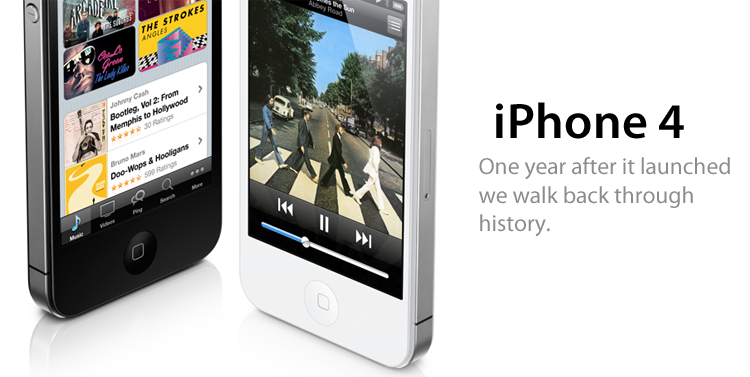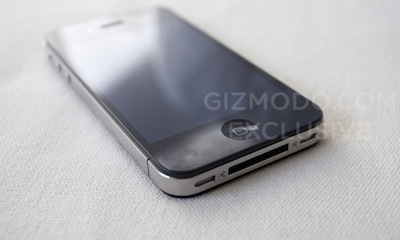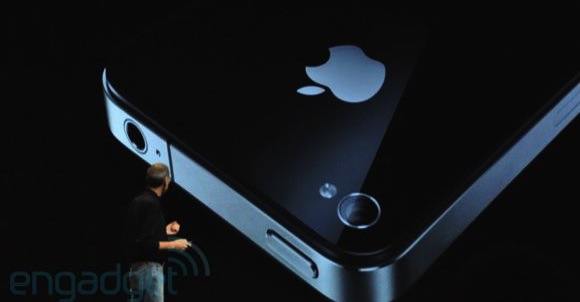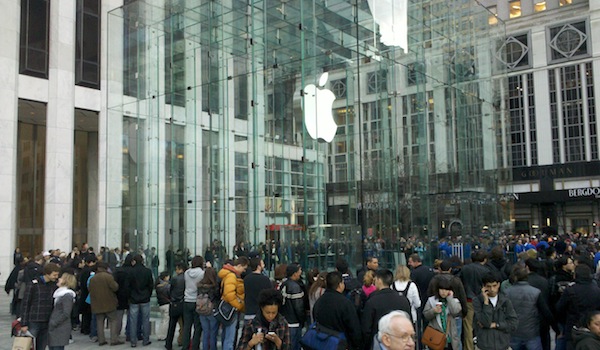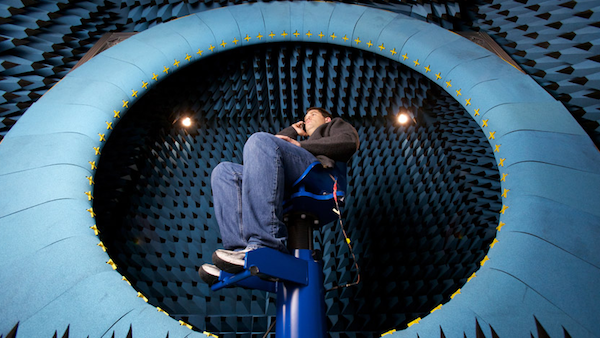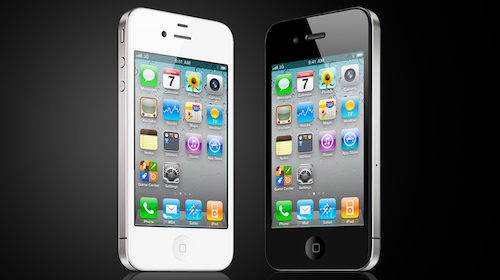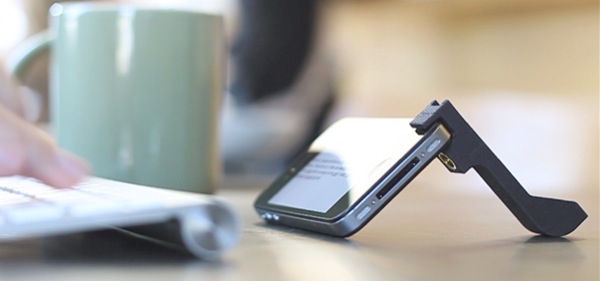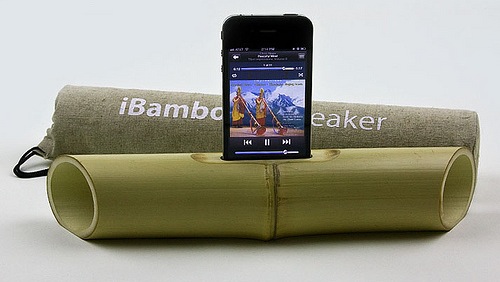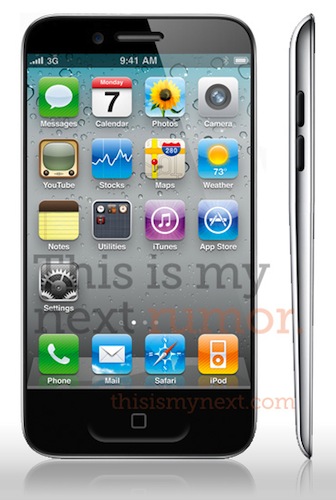Today is June 24, 2011. Believe it or not, it has already been one year since the iPhone 4 went on sale across the US, UK, France, Germany and Japan to literally millions of people who eagerly waited in line to get their hands on the latest and greatest iPhone yet. The history of the iPhone 4 has been remarkable, controversial and fascinating, filled with prototype leaks, criminal investigations, amazing technology, scandals, mystical white unicorns, new carrier allegiances and more. Come along with me as we mark the one-year anniversary of the iPhone 4 with a walk down memory lane.
The Leaks
As always happens with Apple products, there are rumors that spread months before a product ever launches – but with the iPhone 4 things were different, very different. It began an April 17th 2010 when Engadget posted pictures of what they thought was the next iPhone – they were in fact accurate. But on April 19th 2010 the tech scene erupted in amazement when Gizmodo revealed it actually had an iPhone 4 prototype and promptly posted a bunch of photos and videos of the device.
As the story unfolded, it was revealed that Gizmodo had paid $5000 to Brian Hogan who had found the prototype iPhone in bar. It had been accidently left by Apple Engineer Gray Powell at a bar in San Francisco. Eventually police would raid the home of Gizmodo writer Jason Chen who wrote the article, and launch an investigation into both Gizmodo and Brian Hogan.
The third and final major leak was from the Vietnamese website Taoviet which posted what seemed to be production units of the iPhone 4. DigiTimes also managed to confirm from this leak that the screen resolution of the iPhone 4 was 960 x 640 which was confirmed later to be the Retina Display resolution.
The Announcement
Today we’re introducing the iPhone 4. Now this is really hard, there are well over a 100 new features and we don’t have time to cover them all today so I get to cover eight new features of the iPhone 4. The first one, the all-new design. Now stop me if you’ve already seen this! …Believe me, you aint seen it yet. (Emphasis Added)
With those words the 2010 WWDC Keynote erupted in applause and laughter as Steve Jobs (officially, at least) unveiled the iPhone 4. It looked identical to the device that Gizmodo had received. But that didn’t mean the keynote said nothing new - rather it gave the leaked device context and highlighted the true potential of features such as the A4 processor, Retina Display and the terrific 5 MP camera which also featured 720p video capture.
The announcement also covered the launch of iOS 4 which brought the much requested feature of multi-tasking to the iPhone as well as other more minor features such as home screen folders, Game Center, unified inbox and the ability to change the home screen background. FaceTime was the other big announcement for the iPhone 4, with Apple launching its own video chat solution for iPhone 4 and Mac users (this would later include the iPod Touch (generation 4) and iPad 2 users). FaceTime was one of the big marketing pushes surrounding the iPhone 4 and Apple has since launched a number of adverts that hinged around this feature.
The Launch
On Thursday June 24th 2010, the iPhone 4 launched in the US, UK, France, Germany and Japan to large lines at Apple Stores. There was a large second launch on July 30th where the iPhone 4 made its way to 17 more countries including Australia, Canada, Italy, New Zealand and Spain. Over the following months Apple continued to launch the iPhone 4 in various countries including China, which got it on September 25th 2010.
‘Antennagate’ and Other Controversies
Soon after the launch of the iPhone 4, word began spreading of an issue where if one touched the black band on the lower left edge of the iPhone 4’s antenna, the signal reception was reduced. Gizmodo, amongst others began posting a barrage of videos that seemed to conclusively demonstrate that when touching the antenna in that location, the iPhone would “drop bars”.
The issue flared up when Apple released official advice to iPhone 4 owners to “avoid gripping it in the lower left corner in a way that covers both sides of the black strip in the metal band” or alternatively buy a case to shield the antenna. The issue became major news in the tech world and was being dubbed ‘Antennagate’ – even Consumer Reports had stopped recommending the iPhone 4, instead suggesting consumers purchase an iPhone 3GS.
Eventually Apple took definitive action the issue and called a special press conference to defuse the situation. The event was multi-pronged in how it dealt with the situation; Steve Jobs began by presenting videos that showed other smartphones having a similar fault if held in a specific way. Then Jobs revealed the issue facing the iPhone 4 had been amplified because Apple had been using an incorrect algorithm for calculating the cell signal, which amplified the attenuation issues.
Jobs also put emphasis on the investment Apple has made in testing each iPhone model for network performance, showing some bizarre but very cool photos of their facilities. Data was also thrown about, showing only 0.55% of users had complained about reception issues – historically a small number. Finally compared to the 3GS the iPhone 4 was only dropping 1 additional call per 100 – affecting only a tiny percentage of users. Nonetheless Apple offered free iPhone 4 Bumpers and soon enough the issue faded away into history - although some still claim it is a fatal flaw to the iPhone 4.
Again, listening to antennagate, it must be dropping nearly half the calls… This is the hard data. The iPhone 4 drops less than 1 additional call per 100.
After Antennagate, nearly every potential issue with the iPhone 4 was picked up upon and sensationalized, but none of these ever eventuated and were quickly dismissed as unsubstantiated or affecting a minute subset of users who received replacement iPhones. These issues included an issue with the proximity sensor, some camera image faults and ‘Glassgate’.
The Verizon iPhone 4
After three and a half years of AT&T exclusivity, Apple eventually reached out to Verizon and worked with them to launch the Verizon (CDMA) iPhone 4 on February 10 this year. Pre-orders for the device started on February 3 and Verizon broke its first-day sales record, selling half a million Verizon iPhones. The actual launch day was fairly low-key – with most having opted to pre-order the device.
The launch of the Verizon iPhone 4 finally gave US consumers a choice of carriers when purchasing an iPhone, previously the only other option was to use a Jailbreak unlock on their iPhone or purchase an unlocked iPhone from an international country. It also helped increase the take-up of the iPhone 4 and contributed to helping Apple reach the milestone of selling 200 million iOS devices. Reports in recent days are also saying that it was one of the factors that led to an slow-down in Android sales over the past few months.
The Mystical Unicorn White iPhone
Ah, the White iPhone 4, perhaps the most perplexing of stories involved in the history of the iPhone 4. Steve Jobs unveiled the white iPhone 4 at the WWDC keynote, right alongside the standard black version – both were expected to launch on June 24, 2010. Then, just days before it was supposed to launch, Apple released a statement that pushed the launch of the white iPhone to late July, citing manufacturing challenges.
The timeline for release continued to slip, first it was post-poned to “later in 2010” and then till “Spring 2011”. So desperate did people get for a White iPhone 4 that conversion kits began to spring up all over the place, including this one from Fei Lam, a teenager who has subsequently been sued by Apple over the kits.
Then earlier this year on Twitter, when prodded by a consumer, Phil Schiller confirmed it would be coming this Spring and eventually on April 26 Apple confirmed it was launching, and launching the following day on April 27. Bizarrely, the iPad 2 managed to beat the iPhone 4 in receiving a white version, despite being announced more than 6 months after the iPhone 4.
The Awesome Kickstarter Projects
Over the past year, Kickstarter has really taken off and has allowed nearly anyone the ability to turn an awesome idea into a reality by crowdsourcing the funding needed. An awesome consequence of this has been the awesome new and unique accessories that people are creating for the iPhone 4. I’ve taken a look back over our archives and have highlighted three of the best projects we’ve covered:
The Glif is a stand/tripod mount hybrid that doesn’t suck, doesn’t look bad and, most of all, could finally help you get things done. It could be a great way to use your iPhone as a digital clock, a great camera tripod and so on…
The Glif is available now for sale.
Red Pop
Red Pop is an iPhone accessory that adds a physical shutter button and grip to your iPhone 4 – simply plug the iPhone 4 into the 30-pin dock connector. Beep created the Red Pop because they believe the experience of using the iPhone 4 as a camera could be improved
You can still contribute to the Red Pop Kickstarter project until July 2.
iBamboo Speaker
Using just a foot of bamboo it uses the natural resonance to amplify the sound coming from an iPhone to create an ‘electricity-free’ speaker
You can still contribute to the iBamboo Speaker Kickstarter project until July 9.
Where To Now?
For the first time in the iPhones four-year history, Apple hasn’t revealed its iPhone in June. Rumors are rife that Apple will instead do so at a Fall event – a period typically dominated by an event with new iPods and iTunes versions.
There are two competing rumors over what the next iPhone will feature – but so far we have had no Gizmodo-esque leaks revealing the iPhone 5. The first set of rumors is that the iPhone 5 will be more of an iPhone 4S, similar to the minor evolution of the iPhone that the 3GS brought. These rumors suggest that the next iPhone will feature a similar (if not identical) design to the current iPhone 4, include the A5 processor and potentially include an improved camera (potentially an 8 MP one).
The other set of rumors, dominated by This is my next and BGR suggest that the next iPhone will be a more radical change, just as the iPhone 4 was. These rumors suggest that the iPhone 5 will feature a new design (one suggestion is a ‘tear drop’ profile) and a larger screen amongst the expected A5 processor and improved camera.
The one thing we do know though, is the software that will power the iPhone 5 – that was revealed at WWDC two weeks ago. iOS 5 resolves many complaints that users had over the iPhone and fills in features that were missing on the iPhone but present on Android and Windows Phone 7. A new notification system, wireless syncing and Twitter integration are the cornerstone features that iOS 5 brings. We also know of iCloud, which demotes your computer and makes the cloud your hub for syncing content.


